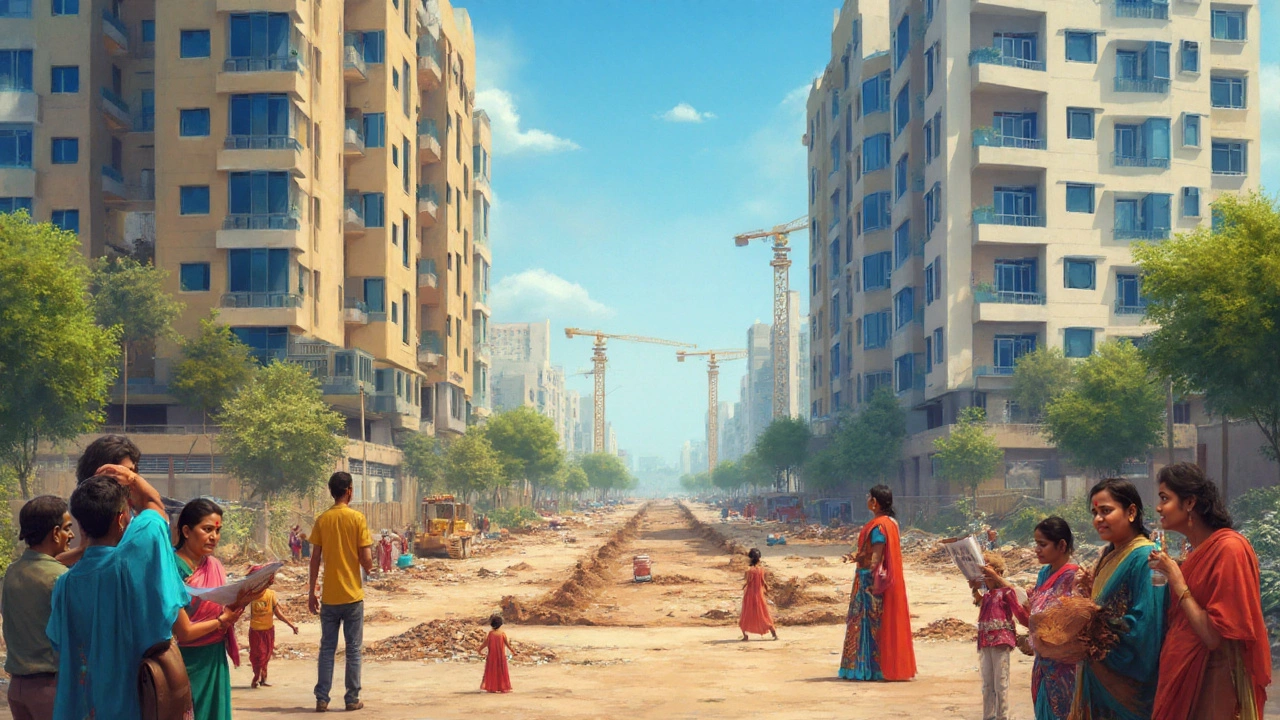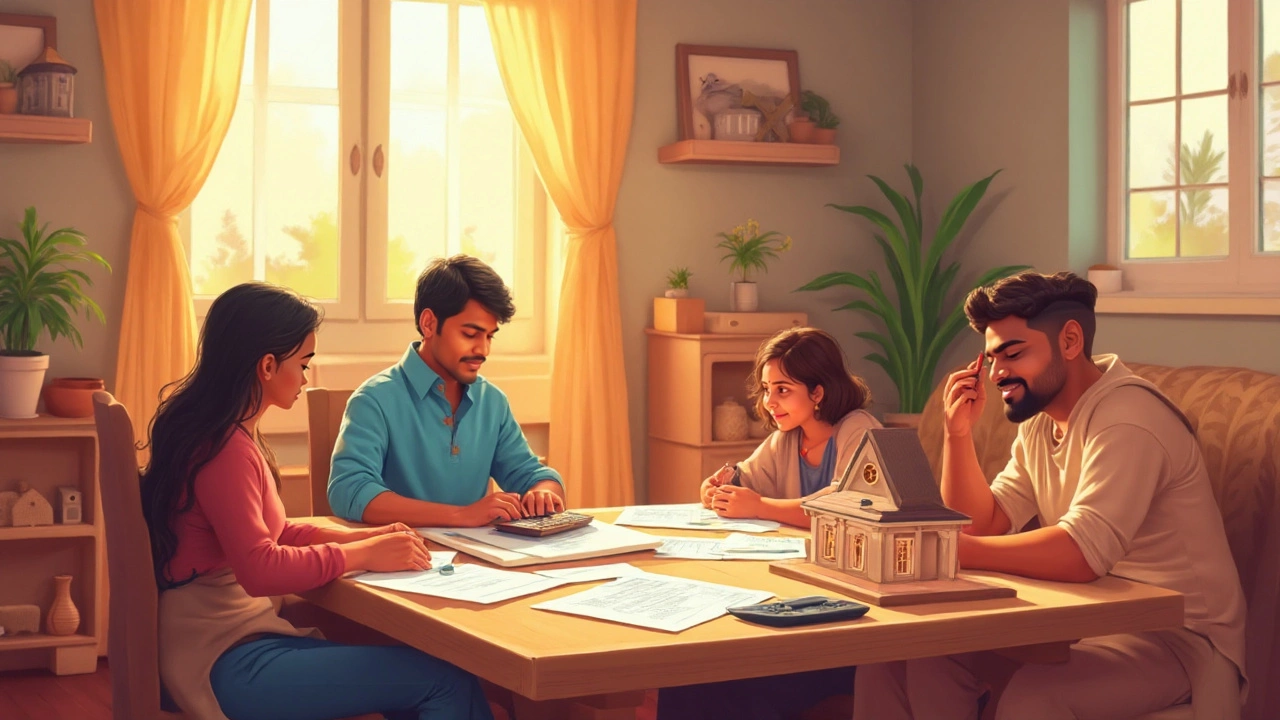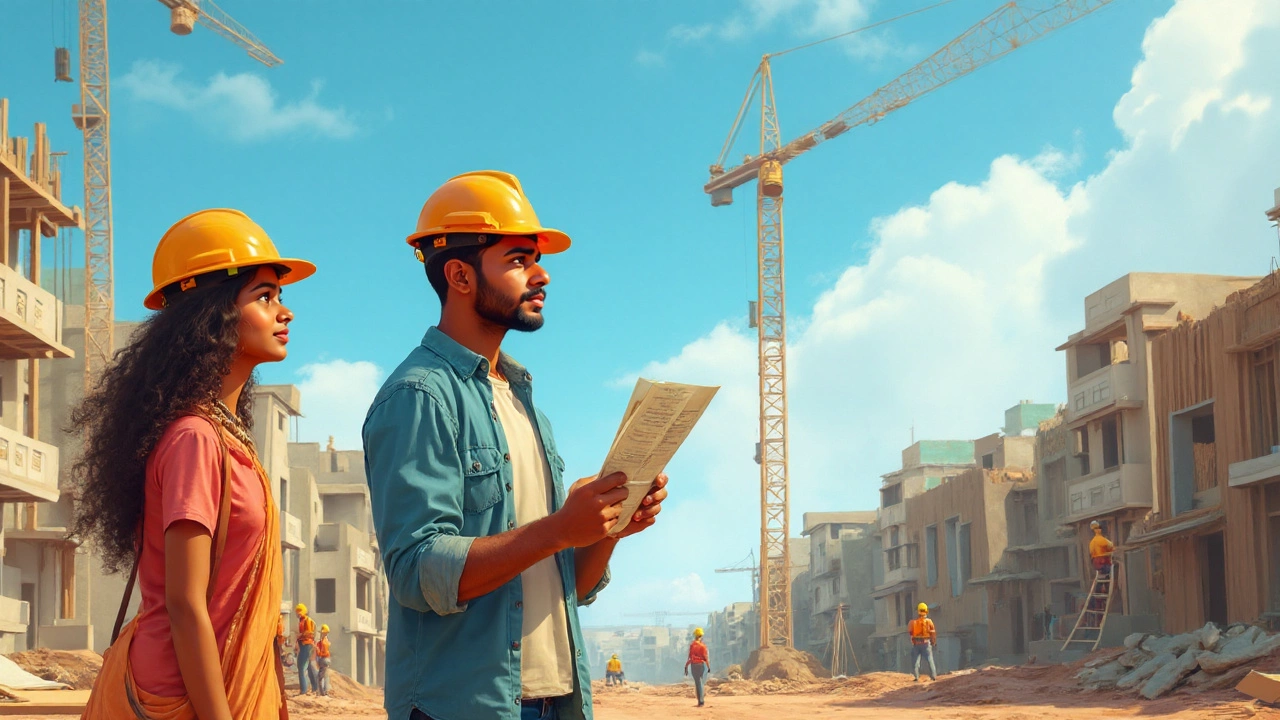Picture this: you spot a plot of land with an amazing view, and you start dreaming up your perfect house. Next, reality smacks you—mortgage rates, contractor quotes, materials, permits. Or maybe you’re scrolling through listings, weighing whether it’s smarter (and cheaper) to snag a move-in-ready place instead. The old wisdom used to say building was for the brave, but in today’s market, is that really true? Let’s clear the fog around 2025’s biggest homeowner dilemma: is it actually cheaper to build than buy right now?
The Current Price Tag: Building a House in 2025
There’s always been something special about building a home from scratch. You set the floor plan, pick the paint colors, and avoid awkward kitchen layouts from the ‘90s. But the freedom comes at a price—literally. In 2025, building a typical single-family house in the United States costs between $305,000 and $480,000, not counting the land. That range covers standard layouts and mid-grade finishes. Of course, if you go for fancier upgrades or custom work, costs can skyrocket well over $600,000. Labor and materials make up about 60-65% of your budget. What’s driving the numbers?
Material prices have hopped all over the place lately. Lumber is down from its 2021 peak ($1,600+ per thousand board feet that summer), but it’s still around $600—a far cry from the $350 or so in the 2010s. Steel, concrete, insulation, and even windows have all nudged upwards, thanks to supply chain quirks and good old-fashioned demand. Labor is also taking a chunk out of wallets. Construction workers are harder to find in 2025, so wages are up about 12% vs. two years ago. And there’s no skimping on plumbing or electrical if you want to actually live in your dream house.
Land? That’s the wildcard. Urban and suburban lots are pricey. The average lot in suburbs sells for nearly $60,000—urban lots can be much higher, especially near major cities. Zoning, local rules, and utility hookups add to the bill. Then there’s permits, which can run from $5,000 to $25,000 depending on your county and state. These costs sneak up on folks who figure all they’ll need is a hammer and a vision board.
Here’s a quick cost breakdown of building in 2025 based on real and recent builder estimates:
| Item | Typical Cost (Mid-Range) |
|---|---|
| Construction (labor + materials) | $210,000 - $320,000 |
| Land Purchase | $40,000 - $150,000 |
| Permits & Inspections | $7,000 - $18,000 |
| Architect & Design | $9,000 - $30,000 |
| Utility Hookups | $3,000 - $12,000 |
| Financing Fees | $7,500 - $20,000 |
Surprise fees crop up fast, too. Bad soil means extra foundation work. Supply delays can force you to pay storage or rent somewhere else even longer. And let’s not forget the impact of natural disasters; rebuilding codes in Florida or California just got stricter—and pricier—after recent hurricanes and wildfires.
The upside? You can save a chunk if you’re handy and willing to GC (general contract) the project yourself, or if you join a local builder community, like Habitat’s sweat equity programs (though those come with eligibility requirements). Swapping in stock plans instead of custom blueprints also saves thousands. Still, few people walk away without a surprise expense or two.

Buying a Home: Market Realities and Unexpected Fees
Buying a home sounds easier. You check listings, go to open houses, pinch pennies for a down payment. But here’s the thing: the average sale price in 2025 for an existing single-family home is around $379,000 nationally. That’s up about 7% from last year, which stings for first-time buyers. In big cities like Austin, Denver, or Seattle, prices for semi-modern homes hit $510,000 and up. Found a deal? Check the fine print. Older homes need repairs—think new roofs, HVAC upgrades, maybe full electrics for anything pre-1980.
The cost to actually close is rarely just the sticker price. Expect to shell out 2-5% on closing costs. For that $379,000 place, you’re handing over up to $19,000 before you even get the keys. There’s also home inspections ($400-800), title insurance, appraisals, mandatory prepaid property taxes, and the infamous moving costs (which hit about $2,500 in 2025 for local moves, $5,500+ cross-country). If you’re in an HOA, add those fees—ranging from $50 to over $400 a month, depending on where you buy.
Inventory is another gnarly piece. In early 2025, active listings sit at about two-thirds of typical pre-pandemic levels. Fewer houses mean more buyers squabbling over each one, pushing prices higher. Fear of missing out is back, and the bidding wars are most intense for homes that are move-in ready or recently renovated. Studies from the National Association of Realtors show that 51% of buyers paid above list price at least once in the last 18 months. Not fun when you’re on a budget.
Then there’s the mortgage rates. As of August 2025, the average 30-year fixed rate is floating around 6.1% (down a tad from earlier this year, but way up vs. 2021’s lockdown lows of 3%). Higher rates mean higher monthly payments. You’re also more likely to get stuck with points, origination fees, and—surprise again—private mortgage insurance if your down payment is less than 20%.
Here’s a look at what today’s typical buyer faces in extra home-buying costs:
| Cost Type | Average |
|---|---|
| Closing Costs (2-5%) | $7,500 - $19,000 |
| Home Inspection | $400 - $800 |
| Title Insurance & Fees | $900 - $1,700 |
| Upgrades/Immediate Repairs | $8,000 - $22,000 |
| Appraisal | $450 - $1,000 |
| Private Mortgage Insurance | $1,500 - $3,000/yr (if <20% down) |
| Moving Costs | $2,500 - $6,000 |
If you want modern finishes—a new-ish kitchen, energy-efficient heating and cooling, solar panels—the price gap with building narrows quickly. That’s why a lot of buyers are pivoting to so-called ‘fixer-uppers’ (about 39% in 2024, according to Zillow), hoping sweat equity will get them a better deal. It often does… until the plumbing leaks. Or the foundation cracks. Nobody’s talking about their expensive foundation "surprise" at a dinner party, but it’s real—and it can kill your renovation budget fast.

How to Decide: Real-Life Tips, Math, and Gut Checks
So, is it cheaper to build or buy in 2025? Well, the answer really depends on where you live, what you want, and how much time you have. If you’re in a hot market where existing homes are old, limited, or needing tons of work, building can actually make more sense. In rural or less-crowded areas, building is often cheaper, especially if you own land already. The catch? Patience. Most builds run at least 8-12 months—and with today’s supply chain hiccups, that’s just the start. You’ll need backup plans for late deliveries, permit delays, and maybe even rising prices mid-project.
If you want something ASAP and don’t want to juggle contractors, buying might win out, even if the sticker shock stings. There’s peace of mind in knowing what you’re paying and not having to rent for an extra year. Just be ready to compromise on your wish list or jump on repairs right away. No house is perfect—even "new" homes sometimes have leftover builder issues that need fixing (just ask anyone who’s ever battled freshly painted drywall dust or post-move water leaks).
- Run the numbers, but keep at least a 10% buffer for either path. Both options have hidden expenses. Use a spreadsheet or a free online calculator to break down actual quotes, instead of relying on averages.
- If you’re building, hunt for lots that already have utilities (water, sewer, electric). Some cities even offer tax breaks or permit discounts to encourage new builds, especially in revitalizing neighborhoods. Check local programs.
- For buyers, ask your real estate agent to help you spot "hidden" homes—ones that linger on the market because they look outdated online, but really only need minor tweaks or a coat of paint.
- Negotiate everything. Even if builders say prices are fixed, push for appliance upgrades or landscaping credits. On the existing-home side, negotiate for seller-paid closing costs, especially if the home needs work.
- If you’re handy, factor in the real value of DIY work. Installing your own flooring or painting walls can save thousands, but some jobs, like roofing or electrical, are better left to pros for safety (and inspection) reasons.
- Consider energy efficiency. New builds usually beat old homes on insulation, windows, and HVAC, which means lower bills long term. Factor these potential savings into your budget, not just the purchase price.
- Remember, timelines matter. If you’re not in a rush, construction might give you more control over final features. If you need to move in right away, buying—or even renting while you hunt more—is usually faster (and less stressful).
One interesting tidbit: according to a survey by the National Association of Home Builders, 67% of recent buyers said they would have preferred new construction if it had fit their budget and timeline. So you’re not alone if you’re eyeing a build but feeling frustrated by the costs.
If there’s one thing that’s certain, it’s that the build vs buy house debate isn’t going away soon. The numbers aren’t as clear as the old days—both paths come packed with extra fees, time demands, and tough choices. Maybe that’s why more folks are blending the two: buying newer spec homes, joining DIY renovation communities, or even exploring prefab/modular building. The best advice? Dig into your local market, trust your instincts, and ask loads of questions before you leap. Sometimes, the perfect spot finds you. Sometimes, you find an untapped lot nobody else has noticed. Either way, there’s no one-size-fits-all answer—but there’s always a strategy that fits your life, your family, and your wallet best.
